A Porphyrin-Based Covalent Organic Framework as Metal-Free Visible-LED-Light Photocatalyst for One-Pot Tandem Benzyl Alcohol Oxidation/Knoevenagel Condensation
Abstract
1. Introduction
2. Experimental Section
2.1. Materials
2.2. Characterization Techniques
2.3. Synthesis of Covalent Organic Framework (Porph-UOZ-COF)
2.4. One-Pot Tandem Photocatalytic Carbon–Carbon Forming Reaction of Alcohols and Malononitrile
3. Results and Discussion
3.1. Characterization of Porph-UOZ-COF
3.2. Porph-UOZ-COF-Catalyzed One-Pot Tandem Carbon–Carbon Coupling Reaction
4. Conclusions
Supplementary Materials
Author Contributions
Funding
Data Availability Statement
Acknowledgments
Conflicts of Interest
References
- Zhang, P.; Hu, J.; Liu, B.; Yang, J.; Hou, H. Recent advances in metalloporphyrins for environmental and energy applications. Chemosphere 2019, 219, 617–635. [Google Scholar] [CrossRef] [PubMed]
- Pereira, M.M.; Dias, L.D.; Calvete, M.J.F. Metalloporphyrins: Bioinspired Oxidation Catalysts. ACS Catal. 2018, 8, 10784–10808. [Google Scholar] [CrossRef]
- Shing, K.-P.; Cao, B.; Liu, Y.; Lee, H.K.; Li, M.-D.; Phillips, D.L.; Chang, X.-Y.; Che, C.-M. Arylruthenium(III) Porphyrin-Catalyzed C-H Oxidation and Epoxidation at Room Temperature and [RuV(Por)(O)(Ph)] Intermediate by Spectroscopic Analysis and Density Functional Theory Calculations. J. Am. Chem. Soc. 2018, 140, 7032–7042. [Google Scholar] [CrossRef] [PubMed]
- Gunter, M.J.; Turner, P. Metalloporphyrins as models for the cytochromes p-450. Coord. Chem. Rev. 1991, 108, 115–161. [Google Scholar] [CrossRef]
- Lee, S.J.; Cho, S.-H.; Mulfort, K.L.; Tiede, D.M.; Hupp, J.T.; Nguyen, S.T. Cavity-Tailored, Self-Sorting Supramolecular Catalytic Boxes for Selective Oxidation. J. Am. Chem. Soc. 2008, 130, 16828–16829. [Google Scholar] [CrossRef]
- Szymczak, J.; Kryjewski, M. Porphyrins and Phthalocyanines on Solid-State Mesoporous Matrices as Catalysts in Oxidation Reactions. Materials 2022, 15, 2532. [Google Scholar] [CrossRef] [PubMed]
- Daliran, S.; Khajeh, M.; Oveisi, A.R.; García, H.; Luque, R. Porphyrin Catecholate Iron-Based Metal-Organic Framework for Efficient Visible Light-Promoted One-Pot Tandem C-C Couplings. ACS Sustain. Chem. Eng. 2022, 10, 5315–5322. [Google Scholar] [CrossRef]
- Daliran, S.; Khajeh, M.; Oveisi, A.R.; Albero, J.; García, H. CsCu2I3 Nanoparticles Incorporated within a Mesoporous Metal-Organic Porphyrin Framework as a Catalyst for One-Pot Click Cycloaddition and Oxidation/Knoevenagel Tandem Reaction. ACS Appl. Mater. Interfaces 2022, 14, 36515–36526. [Google Scholar] [CrossRef]
- Shee, N.K.; Jo, H.J.; Kim, H.-J. Coordination framework materials fabricated by the self-assembly of Sn(iv) porphyrins with Ag(i) ions for the photocatalytic degradation of organic dyes in wastewater. Inorg. Chem. Front. 2022, 9, 1270–1280. [Google Scholar] [CrossRef]
- Lin, C.; Han, C.; Zhang, H.; Gong, L.; Gao, Y.; Wang, H.; Bian, Y.; Li, R.; Jiang, J. Porphyrin-Based Metal-Organic Frameworks for Efficient Photocatalytic H2 Production under Visible-Light Irradiation. Inorg. Chem. 2021, 60, 3988–3995. [Google Scholar] [CrossRef] [PubMed]
- Oveisi, A.R.; Zhang, K.; Khorramabadi-zad, A.; Farha, O.K.; Hupp, J.T. Stable and catalytically active iron porphyrin-based porous organic polymer: Activity as both a redox and Lewis acid catalyst. Sci. Rep. 2015, 5, 10621. [Google Scholar] [CrossRef] [PubMed]
- Ji, W.; Wang, T.-X.; Ding, X.; Lei, S.; Han, B.-H. Porphyrin- and phthalocyanine-based porous organic polymers: From synthesis to application. Coord. Chem. Rev. 2021, 439, 213875. [Google Scholar] [CrossRef]
- Jin, L.; Lv, S.; Miao, Y.; Liu, D.; Song, F. Recent Development of Porous Porphyrin-based Nanomaterials for Photocatalysis. ChemCatChem 2021, 13, 140–152. [Google Scholar] [CrossRef]
- Daliran, S.; Oveisi, A.R.; Peng, Y.; López-Magano, A.; Khajeh, M.; Mas-Ballesté, R.; Alemán, J.; Luque, R.; Garcia, H. Metal-organic framework (MOF)-, covalent-organic framework (COF)-, and porous-organic polymers (POP)-catalyzed selective C-H bond activation and functionalization reactions. Chem. Soc. Rev. 2022, 51, 7810–7882. [Google Scholar] [CrossRef] [PubMed]
- Lin, G.; Ding, H.; Chen, R.; Peng, Z.; Wang, B.; Wang, C. 3D Porphyrin-Based Covalent Organic Frameworks. J. Am. Chem. Soc. 2017, 139, 8705–8709. [Google Scholar] [CrossRef]
- López-Magano, A.; Daliran, S.; Oveisi, A.R.; Mas-Ballesté, R.; Dhakshinamoorthy, A.; Alemán, J.; Garcia, H.; Luque, R. Recent Advances in the Use of Covalent Organic Frameworks as Heterogeneous Photocatalysts in Organic Synthesis. Adv. Mater. 2023, 2209475. [Google Scholar] [CrossRef] [PubMed]
- Guo, J.; Jiang, D. Covalent Organic Frameworks for Heterogeneous Catalysis: Principle, Current Status, and Challenges. ACS Cent. Sci. 2020, 6, 869–879. [Google Scholar] [CrossRef]
- Waller, P.J.; Gándara, F.; Yaghi, O.M. Chemistry of Covalent Organic Frameworks. Acc. Chem. Res. 2015, 48, 3053–3063. [Google Scholar] [CrossRef]
- Wang, X.-L.; Sun, Y.-Y.; Xiao, Y.; Chen, X.-X.; Huang, X.-C.; Zhou, H.-L. Facile Solution-Refluxing Synthesis and Photocatalytic Dye Degradation of a Dynamic Covalent Organic Framework. Molecules 2022, 27, 8002. [Google Scholar] [CrossRef]
- Lyle, S.J.; Waller, P.J.; Yaghi, O.M. Covalent Organic Frameworks: Organic Chemistry Extended into Two and Three Dimensions. Trends Chem. 2019, 1, 172–184. [Google Scholar] [CrossRef]
- Zhang, Y.; Xu, X.; Liao, Q.; Wang, Q.; Han, Q.; Chen, P.; Xi, K. New potential of boron-based COFs: The biocompatible COF-1 for reactive oxygen generation and antimicrobial applications. J. Mater. Chem. B 2022, 10, 3285–3292. [Google Scholar] [CrossRef] [PubMed]
- Feng, X.; Chen, L.; Dong, Y.; Jiang, D. Porphyrin-based two-dimensional covalent organic frameworks: Synchronized synthetic control of macroscopic structures and pore parameters. Chem. Commun. 2011, 47, 1979–1981. [Google Scholar] [CrossRef] [PubMed]
- Wan, S.; Gándara, F.; Asano, A.; Furukawa, H.; Saeki, A.; Dey, S.K.; Liao, L.; Ambrogio, M.W.; Botros, Y.Y.; Duan, X.; et al. Covalent Organic Frameworks with High Charge Carrier Mobility. Chem. Mater. 2011, 23, 4094–4097. [Google Scholar] [CrossRef]
- DeBlase, C.R.; Dichtel, W.R. Moving Beyond Boron: The Emergence of New Linkage Chemistries in Covalent Organic Frameworks. Macromolecules 2016, 49, 5297–5305. [Google Scholar] [CrossRef]
- Melchionna, M.; Fornasiero, P. Updates on the Roadmap for Photocatalysis. ACS Catal. 2020, 10, 5493–5501. [Google Scholar] [CrossRef]
- Deng, X.; Li, Z.; García, H. Visible Light Induced Organic Transformations Using Metal-Organic-Frameworks (MOFs). Chem. Eur. J. 2017, 23, 11189–11209. [Google Scholar] [CrossRef]
- Xiao, J.; Cheng, K.; Xie, X.; Wang, M.; Xing, S.; Liu, Y.; Hartman, T.; Fu, D.; Bossers, K.; van Huis, M.A.; et al. Tandem catalysis with double-shelled hollow spheres. Nat. Mater. 2022, 21, 572–579. [Google Scholar] [CrossRef]
- Climent, M.J.; Corma, A.; Iborra, S.; Sabater, M.J. Heterogeneous Catalysis for Tandem Reactions. ACS Catal. 2014, 4, 870–891. [Google Scholar] [CrossRef]
- Metzger, K.E.; Moyer, M.M.; Trewyn, B.G. Tandem Catalytic Systems Integrating Biocatalysts and Inorganic Catalysts Using Functionalized Porous Materials. ACS Catal. 2021, 11, 110–122. [Google Scholar] [CrossRef]
- Dhakshinamoorthy, A.; Asiri, A.M.; García, H. Metal-Organic Frameworks as Multifunctional Solid Catalysts. Trends Chem. 2020, 2, 454–466. [Google Scholar] [CrossRef]
- Sun, J.; Abednatanzi, S.; Chen, H.; Liu, Y.-Y.; Leus, K.; Van Der Voort, P. Bifunctional Noble-Metal-Free Catalyst for the Selective Aerobic Oxidation-Knoevenagel One-Pot Reaction: Encapsulation of Polyoxometalates into an Alkylamine-Modified MIL-101 Framework. ACS Appl. Mater. Interfaces 2021, 13, 23558–23566. [Google Scholar] [CrossRef]
- Sun, Q.; Aguila, B.; Ma, S. A bifunctional covalent organic framework as an efficient platform for cascade catalysis. Mater. Chem. Front. 2017, 1, 1310–1316. [Google Scholar] [CrossRef]
- Wu, J.; Hua, W.; Yue, Y.; Gao, Z. A Highly Efficient Bifunctional Catalyst CoOx/tri-g-C3N4 for One-Pot Aerobic Oxidation-Knoevenagel Condensation Reaction. Catalysts 2020, 10, 712. [Google Scholar] [CrossRef]
- Watson, G.; Gohari Derakhshandeh, P.; Abednatanzi, S.; Schmidt, J.; Leus, K.; Van Der Voort, P. A Ru-Complex Tethered to a N-Rich Covalent Triazine Framework for Tandem Aerobic Oxidation-Knoevenagel Condensation Reactions. Molecules 2021, 26, 838. [Google Scholar] [CrossRef]
- Dhakshinamoorthy, A.; Garcia, H. Cascade Reactions Catalyzed by Metal Organic Frameworks. ChemSusChem 2014, 7, 2392–2410. [Google Scholar] [CrossRef] [PubMed]
- Wang, D.; Albero, J.; García, H.; Li, Z. Visible-light-induced tandem reaction of o-aminothiophenols and alcohols to benzothiazoles over Fe-based MOFs: Influence of the structure elucidated by transient absorption spectroscopy. J. Catal. 2017, 349, 156–162. [Google Scholar] [CrossRef]
- Antonangelo, A.R.; Grazia Bezzu, C.; McKeown, N.B.; Nakagaki, S. Highly active manganese porphyrin-based microporous network polymers for selective oxidation reactions. J. Catal. 2019, 369, 133–142. [Google Scholar] [CrossRef]
- Spitaleri, L.; Gangemi, C.M.A.; Purrello, R.; Nicotra, G.; Trusso Sfrazzetto, G.; Casella, G.; Casarin, M.; Gulino, A. Covalently Conjugated Gold-Porphyrin Nanostructures. Nanomaterials 2020, 10, 1644. [Google Scholar] [CrossRef]
- Sarno, D.M.; Matienzo, L.J.; Jones, W.E. X-ray Photoelectron Spectroscopy as a Probe of Intermolecular Interactions in Porphyrin Polymer Thin Films. Inorg. Chem. 2001, 40, 6308–6315. [Google Scholar] [CrossRef]
- Hendrickson, D.N.; Hollander, J.M.; Jolly, W.L. Core-electron binding energies for compounds of boron, carbon, and chromium. Inorg. Chem. 1970, 9, 612–615. [Google Scholar] [CrossRef]
- Weiss, J.W.E.; Bryce, D.L. A Solid-State 11B NMR and Computational Study of Boron Electric Field Gradient and Chemical Shift Tensors in Boronic Acids and Boronic Esters. J. Phys. Chem. A 2010, 114, 5119–5131. [Google Scholar] [CrossRef]
- Foran, G.Y.; Harris, K.J.; Brook, M.A.; Macphail, B.; Goward, G.R. Solid State NMR Study of Boron Coordination Environments in Silicone Boronate (SiBA) Polymers. Macromolecules 2019, 52, 1055–1064. [Google Scholar] [CrossRef]
- Côté, A.P.; Benin, A.I.; Ockwig, N.W.; O’Keeffe, M.; Matzger, A.J.; Yaghi, O.M. Porous, Crystalline, Covalent Organic Frameworks. Science 2005, 310, 1166–1170. [Google Scholar] [CrossRef] [PubMed]
- El-Kaderi, H.M.; Hunt, J.R.; Mendoza-Cortés, J.L.; Côté, A.P.; Taylor, R.E.; O’Keeffe, M.; Yaghi, O.M. Designed Synthesis of 3D Covalent Organic Frameworks. Science 2007, 316, 268–272. [Google Scholar] [CrossRef]
- Sarma, P.; Sarmah, K.K.; Kakoti, D.; Mahanta, S.P.; Adassooriya, N.M.; Nandi, G.; Das, P.J.; Bučar, D.-K.; Thakuria, R. A readily accessible porous organic polymer facilitates high-yielding Knoevenagel condensation at room temperature both in water and under solvent-free mechanochemical conditions. Catal. Commun. 2021, 154, 106304. [Google Scholar] [CrossRef]
- Murase, T.; Nishijima, Y.; Fujita, M. Cage-Catalyzed Knoevenagel Condensation under Neutral Conditions in Water. J. Am. Chem. Soc. 2012, 134, 162–164. [Google Scholar] [CrossRef] [PubMed]
- Xu, D.-Z.; Liu, Y.; Shi, S.; Wang, Y. A simple, efficient and green procedure for Knoevenagel condensation catalyzed by [C4dabco][BF4] ionic liquid in water. Green Chem. 2010, 12, 514–517. [Google Scholar] [CrossRef]
- Rajabi, F.; Ebrahimi, A.Z.; Rabiee, A.; Pineda, A.; Luque, R. Synthesis and Characterization of Novel Pyridine Periodic Mesoporous Organosilicas and Its Catalytic Activity in the Knoevenagel Condensation Reaction. Materials 2020, 13, 1097. [Google Scholar] [CrossRef]
- Panja, S.K.; Dwivedi, N.; Saha, S. First report of the application of simple molecular complexes as organo-catalysts for Knoevenagel condensation. RSC Adv. 2015, 5, 65526–65531. [Google Scholar] [CrossRef]
- Khoshnavazi, R.; Bahrami, L.; Havasi, F. Organic-inorganic hybrid polyoxometalate and its graphene oxide-Fe3O4 nanocomposite, synthesis, characterization and their applications as nanocatalysts for the Knoevenagel condensation and the synthesis of 2,3-dihydroquinazolin-4(1H)-ones. RSC Adv. 2016, 6, 100962–100975. [Google Scholar] [CrossRef]
- Wang, D.; Li, Z. Bi-functional NH2-MIL-101(Fe) for one-pot tandem photo-oxidation/Knoevenagel condensation between aromatic alcohols and active methylene compounds. Catal. Sci. Technol. 2015, 5, 1623–1628. [Google Scholar] [CrossRef]
- Toyao, T.; Saito, M.; Horiuchi, Y.; Matsuoka, M. Development of a novel one-pot reaction system utilizing a bifunctional Zr-based metal-organic framework. Catal. Sci. Technol. 2014, 4, 625–628. [Google Scholar] [CrossRef]
- Wang, J.-S.; Jin, F.-Z.; Ma, H.-C.; Li, X.-B.; Liu, M.-Y.; Kan, J.-L.; Chen, G.-J.; Dong, Y.-B. Au@Cu(II)-MOF: Highly Efficient Bifunctional Heterogeneous Catalyst for Successive Oxidation–Condensation Reactions. Inorg. Chem. 2016, 55, 6685–6691. [Google Scholar] [CrossRef] [PubMed]
- Miao, Z.; Luan, Y.; Qi, C.; Ramella, D. The synthesis of a bifunctional copper metal organic framework and its application in the aerobic oxidation/Knoevenagel condensation sequential reaction. Dalton Trans. 2016, 45, 13917–13924. [Google Scholar] [CrossRef] [PubMed]
- Aryanejad, S.; Bagherzade, G.; Farrokhi, A. Efficient and recyclable novel Ni-based metal-organic framework nanostructure as catalyst for the cascade reaction of alcohol oxidation-Knoevenagel condensation. Appl. Organomet. Chem. 2018, 32, e3995. [Google Scholar] [CrossRef]
- Pacholak, P.; Gontarczyk, K.; Kamiński, R.; Durka, K.; Luliński, S. Boronate Covalent and Hybrid Organic Frameworks Featuring PIII and P=O Lewis Base Sites. Chem. Eur. J. 2020, 26, 12758–12768. [Google Scholar] [CrossRef] [PubMed]
- Modak, A.; Mondal, J.; Bhaumik, A. Porphyrin based porous organic polymer as bi-functional catalyst for selective oxidation and Knoevenagel condensation reactions. Appl. Catal. A Gen. 2013, 459, 41–51. [Google Scholar] [CrossRef]
- Shee, N.K.; Kim, H.-J. Sn(IV)-Porphyrin-Based Nanostructures Featuring Pd(II)-Mediated Supramolecular Arrays and Their Photocatalytic Degradation of Acid Orange 7 Dye. Int. J. Mol. Sci. 2022, 23, 13702. [Google Scholar] [CrossRef]
- Schlachter, A.; Asselin, P.; Harvey, P.D. Porphyrin-Containing MOFs and COFs as Heterogeneous Photosensitizers for Singlet Oxygen-Based Antimicrobial Nanodevices. ACS Appl. Mater. Interfaces 2021, 13, 26651–26672. [Google Scholar] [CrossRef]
- Buglak, A.A.; Filatov, M.A.; Hussain, M.A.; Sugimoto, M. Singlet oxygen generation by porphyrins and metalloporphyrins revisited: A quantitative structure-property relationship (QSPR) study. J. Photochem. Photobiol. A Chem. 2020, 403, 112833. [Google Scholar] [CrossRef]
- Jiang, J.; Liang, Z.; Xiong, X.; Zhou, X.; Ji, H. A Carbazolyl Porphyrin-Based Conjugated Microporous Polymer for Metal-Free Photocatalytic Aerobic Oxidation Reactions. ChemCatChem 2020, 12, 3523–3529. [Google Scholar] [CrossRef]

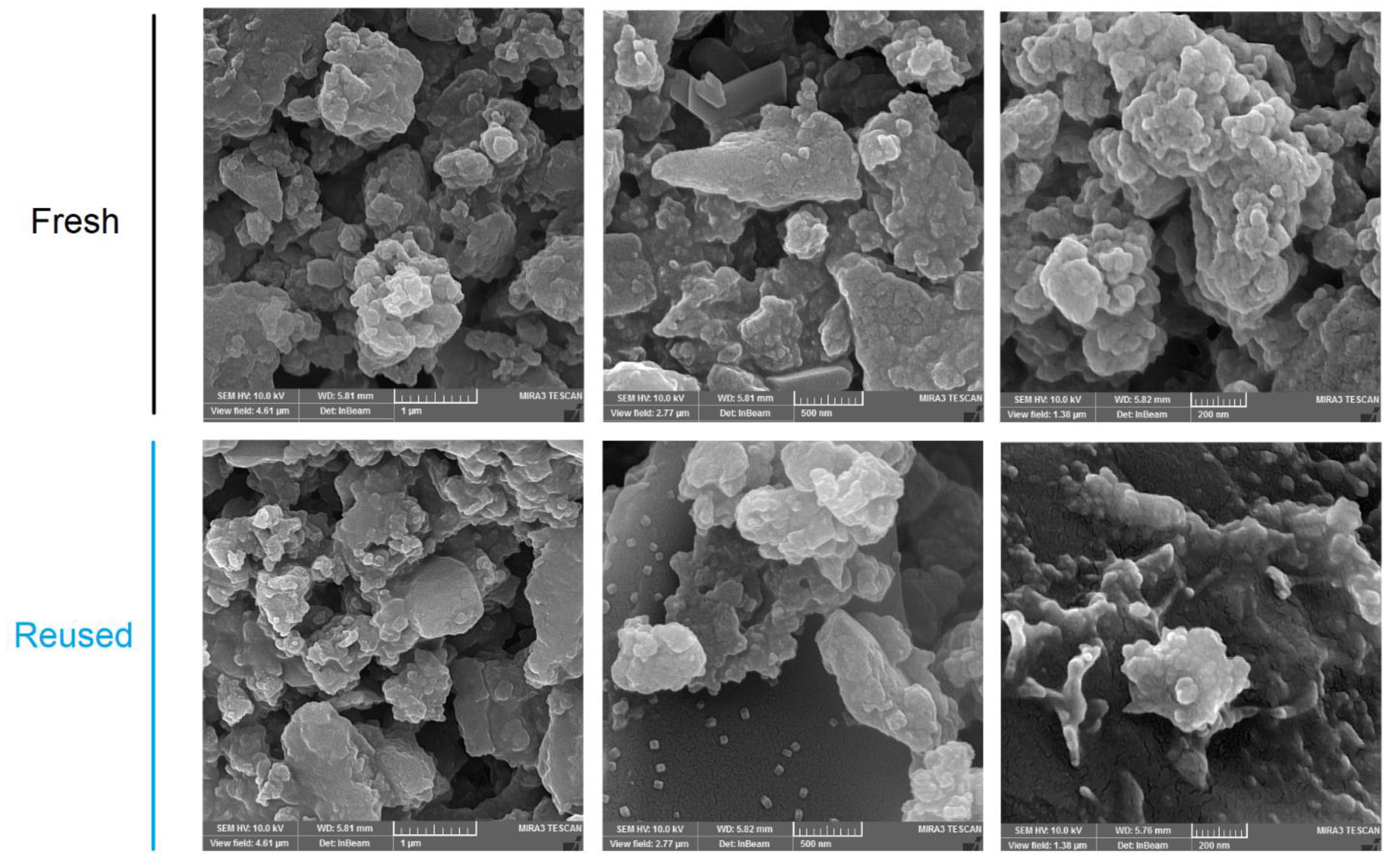

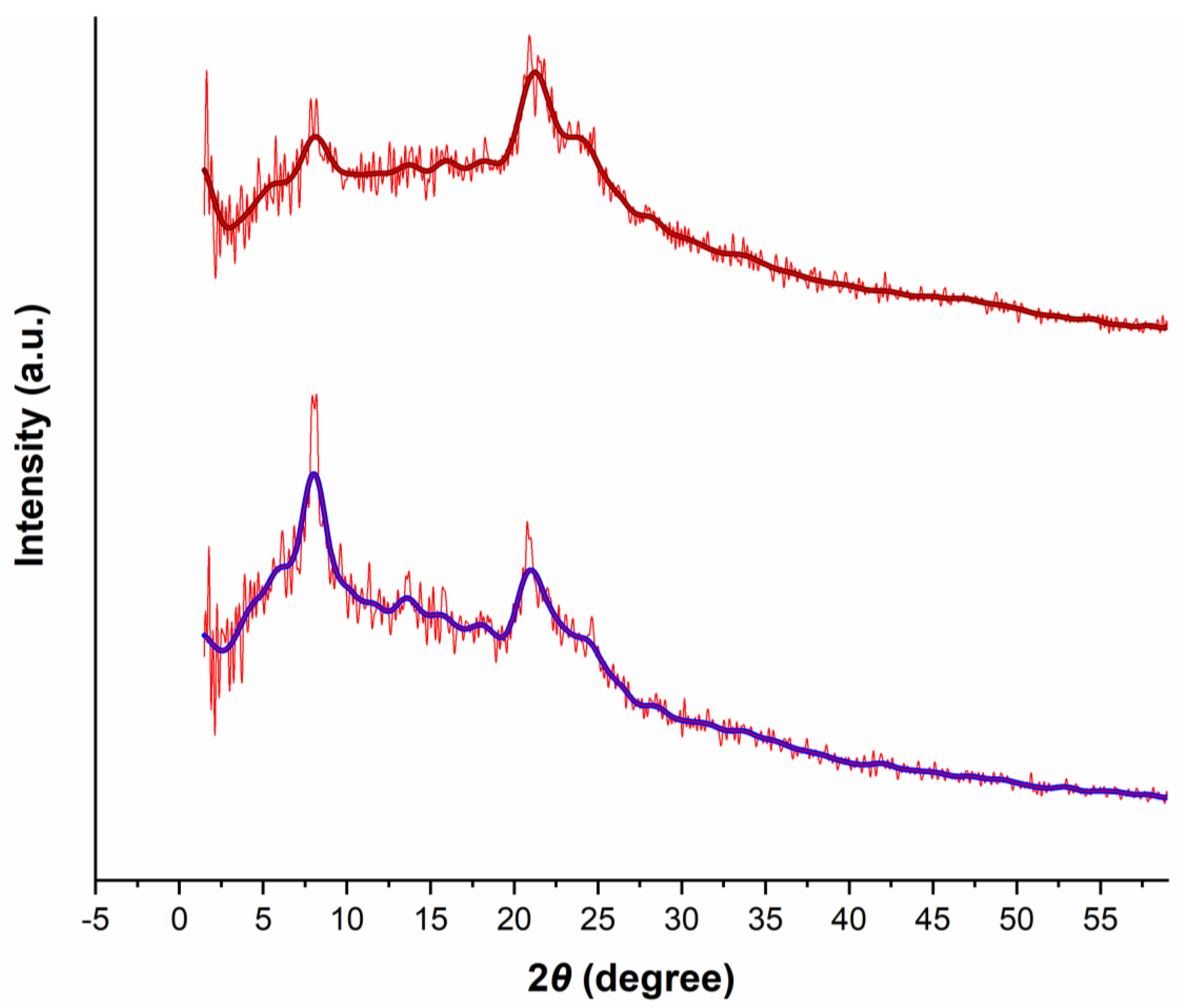
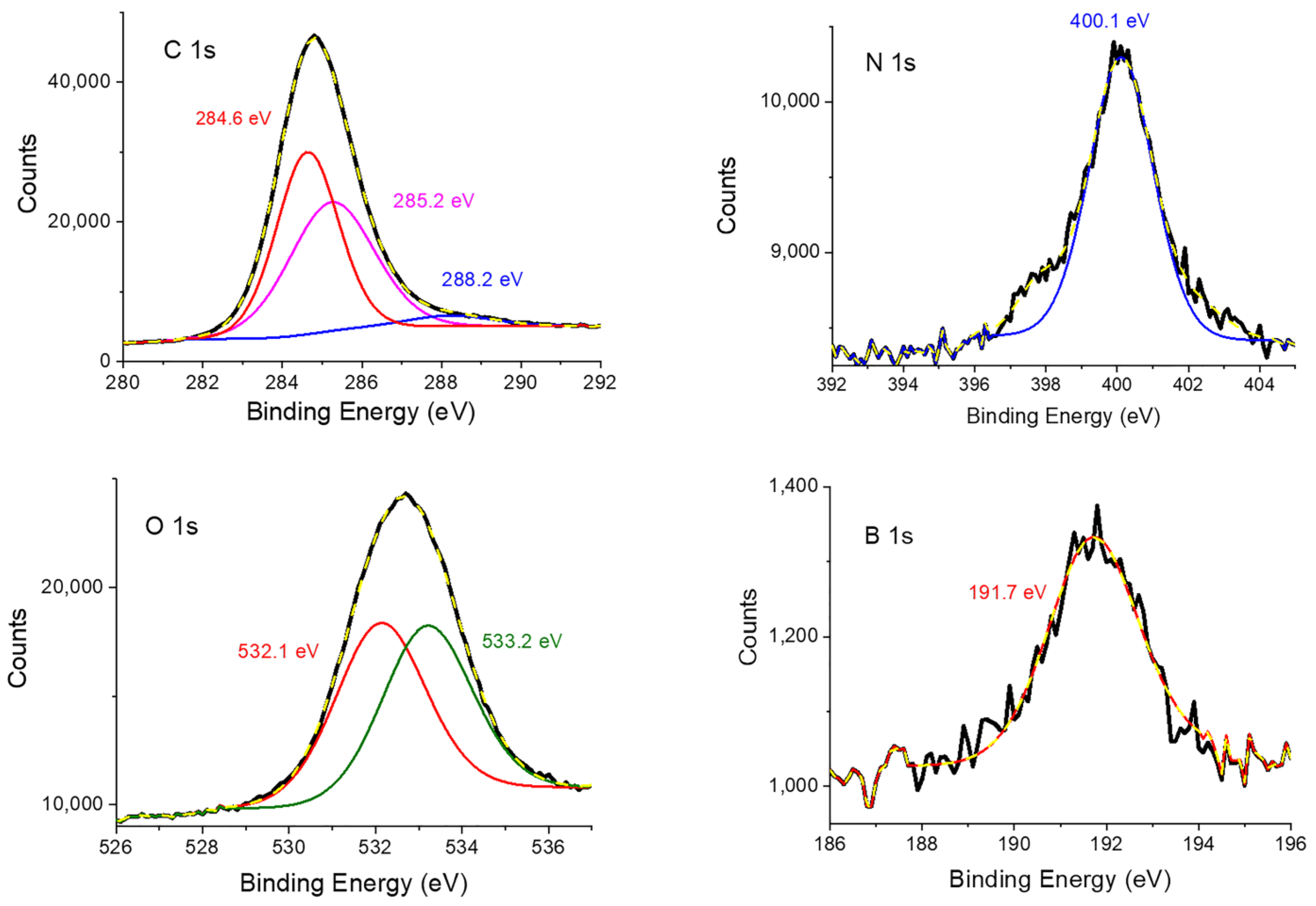
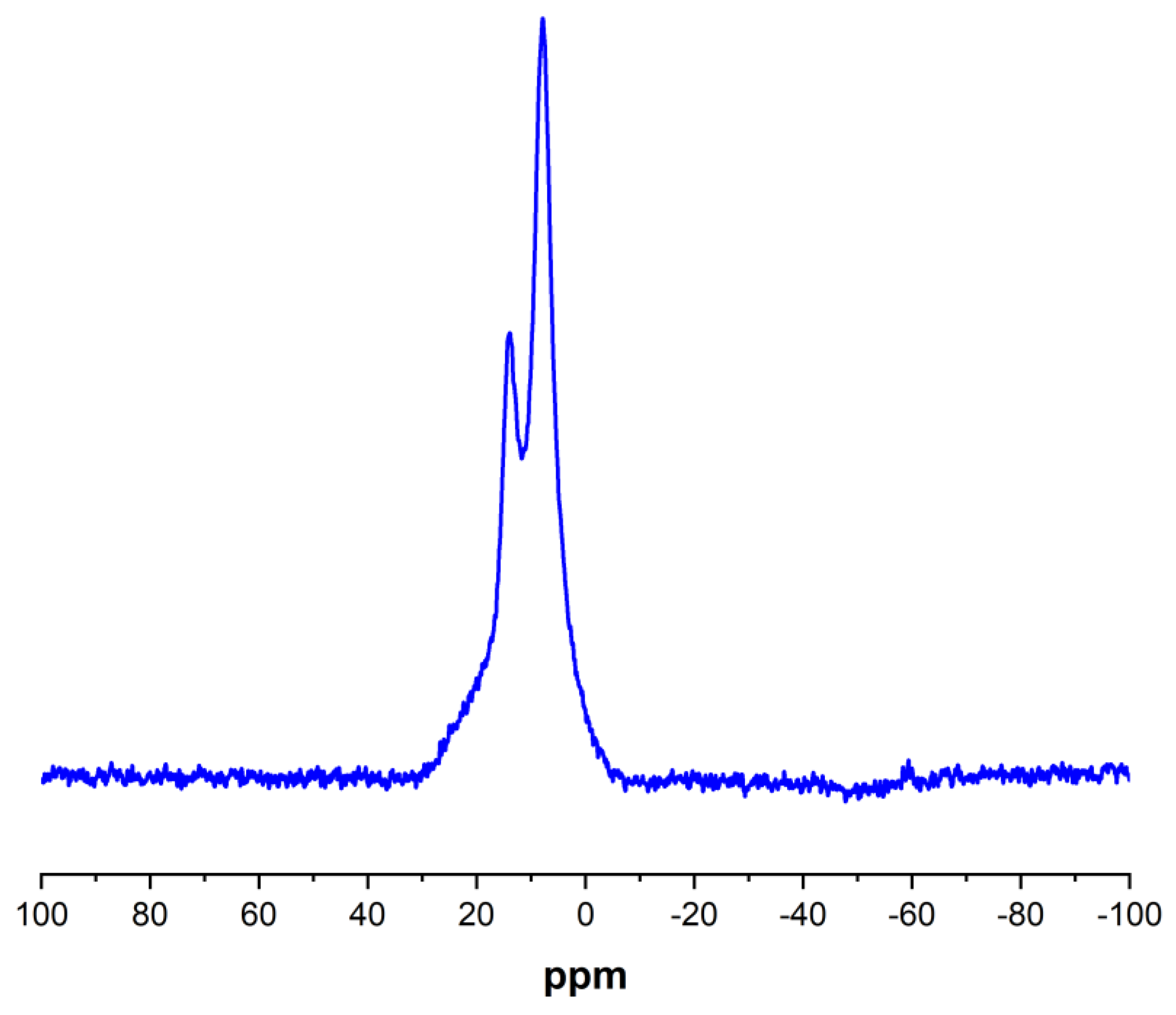

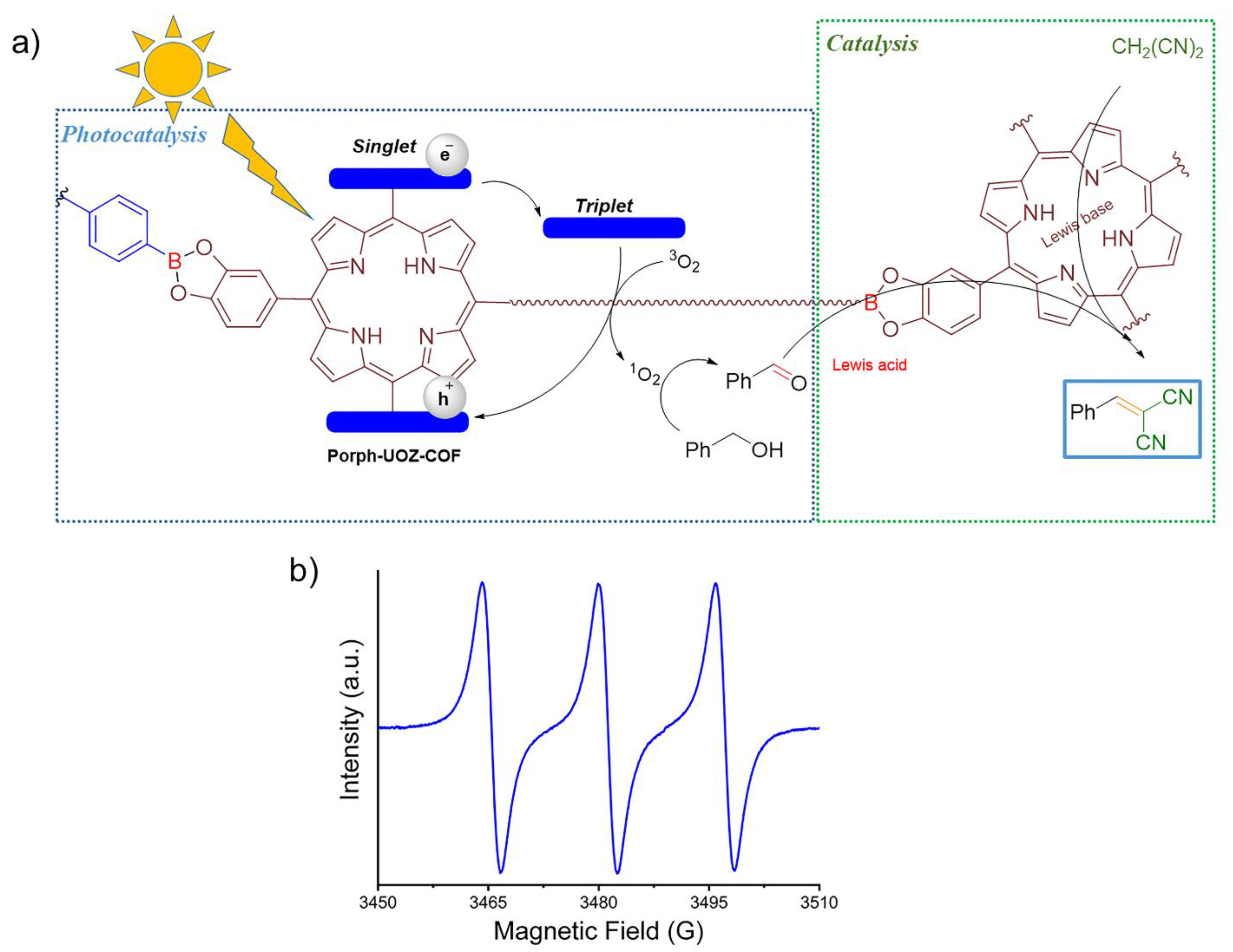
 | |||||
|---|---|---|---|---|---|
| Entry | Catalyst | Solvent | Light | Time (h) | Yield b (%) |
| 1 | Porph-UOZ-COF | CH3CN | + | 72 | 65 |
| 2 | Porph-UOZ-COF | CH3CN/H2O | + | 60 | 93 |
| 3 | Porph-UOZ-COF | H2O | + | 72 | 50 |
| 4 | Porph-UOZ-COF | EtOH | + | 72 | 40 |
| 5 | - | CH3CN/H2O | + | 72 | - |
| 6 | Porph-UOZ-COF | CH3CN/H2O | - | 72 | trace |
| 7 | DHPP | CH3CN/H2O | + | 72 | 40 |
| 8 | DBBA | CH3CN/H2O | + | 72 | - |
| 9 | OMe derivative of DHPP | CH3CN/H2O | + | 72 | 50 |
| 10 | Porph-UOZ-COF c | CH3CN/H2O | + | 60 | 45 |
| Entry | Alcohol | Time (h) | Yield (%) b | Melting Point (°C) | |
|---|---|---|---|---|---|
| Found | Reported [ref.] | ||||
| 1 |  | 60 | 93 | 82–84 | 83–84 [48] |
| 2 |  | 70 | 89 | 160–162 | 160–162 [48] |
| 3 |  | 60 | 91 | 132–135 | 132–134 [49] |
| 4 |  | 69 | 75 | 102–104 | 98–101 [50] |
| Entry | Catalyst | Conditions | Time (h) | Yield (%) | Ref. |
|---|---|---|---|---|---|
| 1 | PorphCat-Fe | CH3CN, visible LED light, and O2 (1 atm) | 24 | 91 | [7] |
| 2 | CsCu2I3@PCN-222(Fe) | CH3CN, Visible LED light, and O2 (1 atm) | 15 | 96 | [8] |
| 3 a | PMoV2@DETA-MIL-101 | First step: toluene, 120 °C, and O2 (1 atm); second step: r.t. | 30 + 6 | 99 | [31] |
| 4 a | Pd/COF-TaPa-Py | Two synthetic steps: toluene, 80 °C, and O2 (1 atm) | 4 + 1.5 | 98 | [32] |
| 5 | CoOx/tri-g-C3N4 | DMF, 80 °C, and O2 flow | 6 | 96.5 | [33] |
| 6 a | RuIII@bipy-CTF | Toluene, Cs2CO3; first step: 100 °C; second step: 70 °C | 12 + 1 | 99 | [34] |
| 7 | MIL-101(Fe)-NH2 | C6H5CF3/CH3CN, visible light (300 W Xe), and O2 (1 atm) | 40 | 72 | [51] |
| 8 | UiO-66(Zr)-NH2 | C6H5CF3/CH3CN, visible light (300 W Xe), and O2 (1 atm) | 40 | 4.6 | [51] |
| 9 | MIL-125(Ti)-NH2 | C6H5CF3/CH3CN, visible light (300 W Xe), and O2 (1 atm) | 40 | 3.3 | [51] |
| 10 | UiO-66(Zr)-NH2 | p-xylene, UV-light irradiation, and 90 °C | 48 | 91 | [52] |
| 11 a | Au@Cu(II)-MOF | First step: air, toluene, and 110 °C; second step: toluene/methanol, r.t. | 15 + 7 | 99 | [53] |
| 12 | Cu3TATAT-3 | CH3CN, TEMPO, 75 °C, and O2 (1 atm) | 12 | 95 | [54] |
| 13 | UoB-2 (Ni-based MOF) | First step: solvent-free, TBHP, and 65 °C; second step: EtOH, r.t. | 1.5 | 94 | [55] |
| 14 | Porph-UOZ-COF | CH3CN/H2O, visible LED light, and O2 (1 atm) | 60 | 93 | This work |
| Entry | Scavenger | Suppressed Species | Yield (%) b |
|---|---|---|---|
| 1 | Sodium azide | 1O2 | 20 |
| 2 | 1,4-Benzoquinone | O2•− | 75 |
| 3 | Isopropanol | •OH | 86 |
Disclaimer/Publisher’s Note: The statements, opinions and data contained in all publications are solely those of the individual author(s) and contributor(s) and not of MDPI and/or the editor(s). MDPI and/or the editor(s) disclaim responsibility for any injury to people or property resulting from any ideas, methods, instructions or products referred to in the content. |
© 2023 by the authors. Licensee MDPI, Basel, Switzerland. This article is an open access article distributed under the terms and conditions of the Creative Commons Attribution (CC BY) license (https://creativecommons.org/licenses/by/4.0/).
Share and Cite
Oudi, S.; Oveisi, A.R.; Daliran, S.; Khajeh, M.; Dhakshinamoorthy, A.; García, H. A Porphyrin-Based Covalent Organic Framework as Metal-Free Visible-LED-Light Photocatalyst for One-Pot Tandem Benzyl Alcohol Oxidation/Knoevenagel Condensation. Nanomaterials 2023, 13, 558. https://doi.org/10.3390/nano13030558
Oudi S, Oveisi AR, Daliran S, Khajeh M, Dhakshinamoorthy A, García H. A Porphyrin-Based Covalent Organic Framework as Metal-Free Visible-LED-Light Photocatalyst for One-Pot Tandem Benzyl Alcohol Oxidation/Knoevenagel Condensation. Nanomaterials. 2023; 13(3):558. https://doi.org/10.3390/nano13030558
Chicago/Turabian StyleOudi, Sara, Ali Reza Oveisi, Saba Daliran, Mostafa Khajeh, Amarajothi Dhakshinamoorthy, and Hermenegildo García. 2023. "A Porphyrin-Based Covalent Organic Framework as Metal-Free Visible-LED-Light Photocatalyst for One-Pot Tandem Benzyl Alcohol Oxidation/Knoevenagel Condensation" Nanomaterials 13, no. 3: 558. https://doi.org/10.3390/nano13030558
APA StyleOudi, S., Oveisi, A. R., Daliran, S., Khajeh, M., Dhakshinamoorthy, A., & García, H. (2023). A Porphyrin-Based Covalent Organic Framework as Metal-Free Visible-LED-Light Photocatalyst for One-Pot Tandem Benzyl Alcohol Oxidation/Knoevenagel Condensation. Nanomaterials, 13(3), 558. https://doi.org/10.3390/nano13030558








